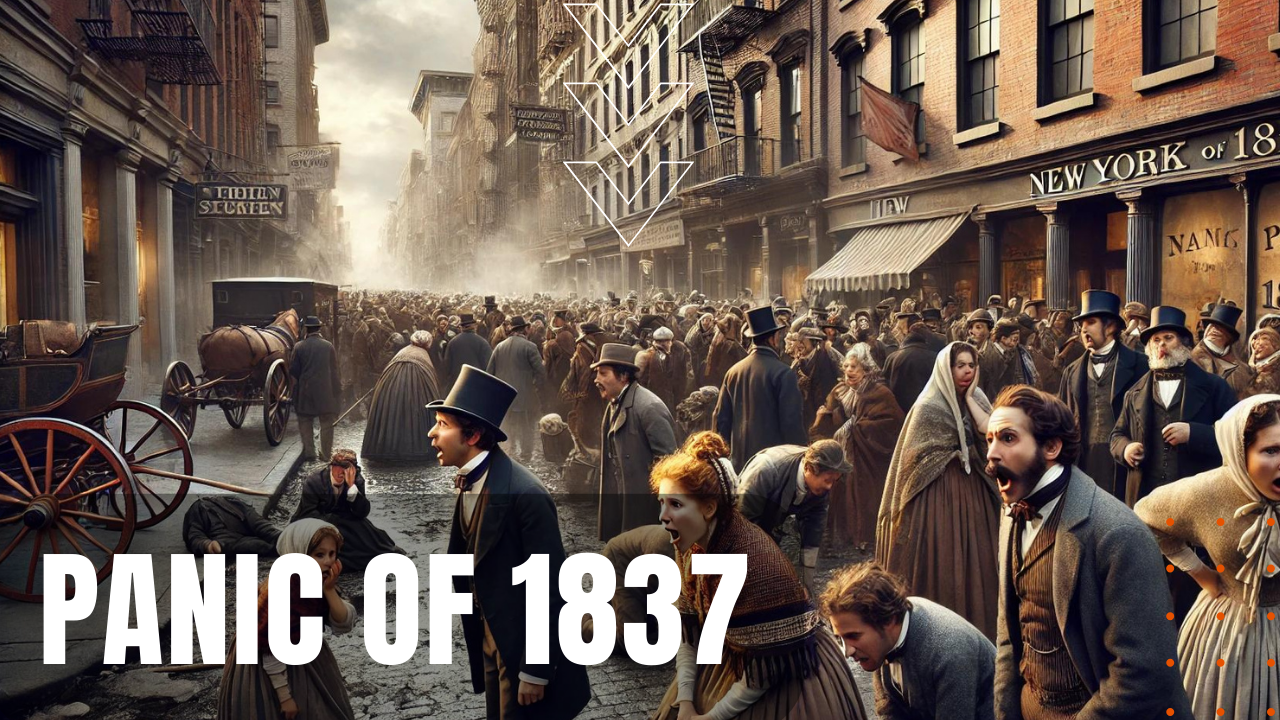The Panic of 1837

During a time when American banks and merchants relied heavily on trade with England and financing from British banks, in 1832, President Andrew Jackson vetoed the rechartering of the Bank of the United States, declaring that the Bank was “unauthorized by the Constitution, subversive to the rights of States, and dangerous to the liberties of the people.” To hasten its demise, Jackson redistributed federal funds among smaller, unregulated state banks across the country, leading to the creation of hundreds of new banks that printed their own currency and made speculative loans in excess of the value of the gold and silver specie in their vaults.
Bad Timing
To further worsen the landscape for the looming disaster, the federal government increased its selloff of western lands to finance infrastructure projects like the construction of roads, canals and bridges, leading to a speculative bubble as western land prices rose in response to demand, leading Jackson to issue his Specie Circular of 1836, requiring payment for government land in gold or silver instead of the increasingly valueless paper currency. The final blow landed when the Bank of England raised interest rates that same year, leading to a tightening of credit as well as a drain of specie from U.S. banks. The resulting panic of 1837 reached its zenith in May of that same year, when hundreds of banks and businesses shuttered their doors, leading to soaring unemployment among the nation’s approximate 14,000,000 Americans, as well as plummeting prices for commodities and durable goods that lasted well into the mid-1840s.
Interventional Measures
In response to the crisis, the Van Buren administration undertook measures to stabilize the economy, including the establishment of an independent treasury system, which wrested control of federal funds away from private banks, while issuing treasury notes to alleviate the shortage of currency in the American economy. The Panic also delivered far-reaching consequences in shaping both American politics and economic policy, fueling debates over banking regulation and the role of the federal government in managing future financial crises. The Panic also contributed to the rise of the Whig Party and the election of Whig candidate William Henry Harrison to the White House in the election cycle of 1840, making the Panic of 1837, a stark reminder of the dangers surrounding over speculation and the inherent fragility of financial systems.
